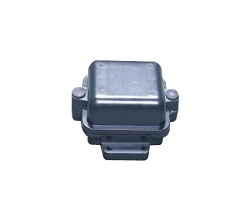𐄀 Technology Connection to Future

Are you looking to improve the efficiency and accuracy of your railroad operations? Installing an axle counter can help you achieve just that. Axle counters are a vital component in modern railway signaling systems, providing accurate train detection and allowing for more precise control over the movement of trains. However, installing an axle counter requires careful planning and execution to ensure optimal performance. In this blog post, Yonggui Connector will provide you with some top tips for successful axle counter installation.
Before beginning the installation of an axle counter, it is essential to conduct a thorough site survey. This survey will help you identify any potential obstacles or challenges that may affect the installation process. It is crucial to assess factors such as track layout, signal distances, and clearance requirements to ensure that the axle counter can be installed correctly and function effectively.
Proper alignment and calibration are key to the successful operation of an axle counter. During axle counter installation, it is essential to carefully align the axle counter sensors with the track to ensure accurate train detection. Additionally, proper calibration of the axle counter system is necessary to ensure that it can accurately count the number of axles passing through the detection zone. Failure to align and calibrate the axle counter correctly can result in inaccurate detection and potential safety hazards.
When installing an axle counter, it is crucial to follow the manufacturer's guidelines and any relevant regulations. Manufacturers like Yonggui connector provide specific instructions on how to install and configure the axle counter system for optimal performance. By adhering to these guidelines, you can ensure that the axle counter functions correctly and meets safety standards. In addition, it is essential to comply with any industry regulations and standards to avoid potential legal issues and ensure the safe operation of trains.
After the axle counter installation, it is essential to conduct thorough testing and commissioning to verify that the system is functioning correctly. Testing should include checks for sensor alignment, train detection accuracy, and communication with the signaling system. Any issues or discrepancies should be addressed promptly to prevent downtime and ensure the reliable operation of the axle counter. Commissioning involves the integration of the axle counter into the signaling system and verifying its performance under live operating conditions.
In conclusion, axle counter installation is a critical aspect of modern railway signaling systems that can improve the efficiency and safety of train operations. By following these top tips for successful axle counter installation, you can ensure that the system functions effectively and meets the necessary safety standards. Remember to conduct a thorough site survey, ensure proper alignment and calibration, follow manufacturer guidelines and regulations, and conduct thorough testing and commissioning to achieve a successful installation. By investing time and effort in the installation process, you can enjoy the benefits of an accurate and reliable axle counter system.